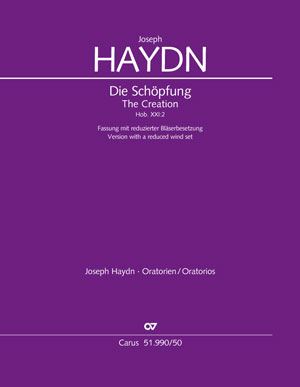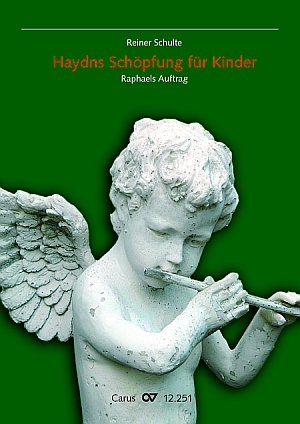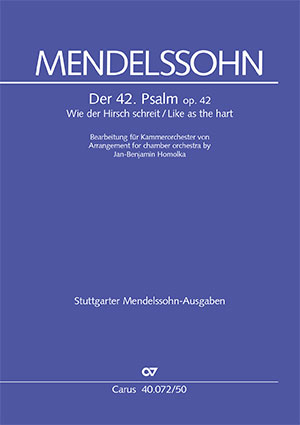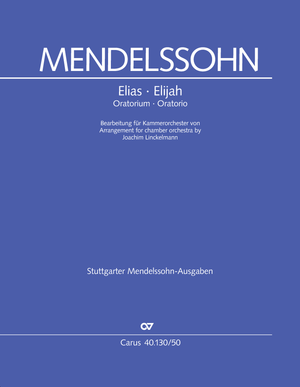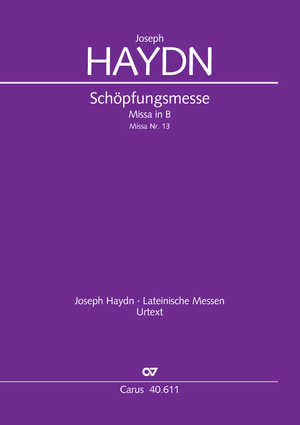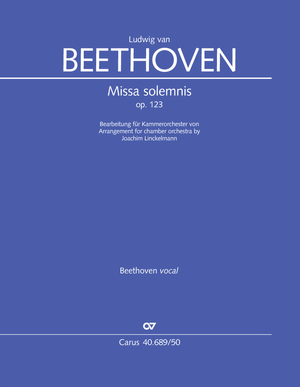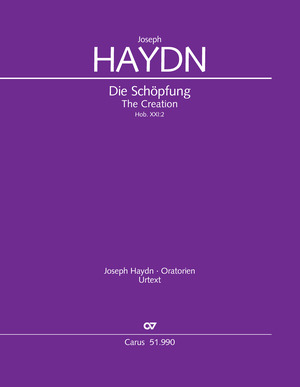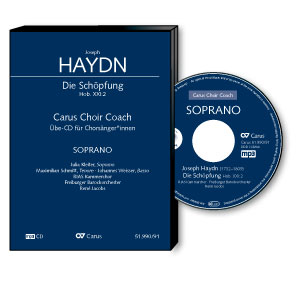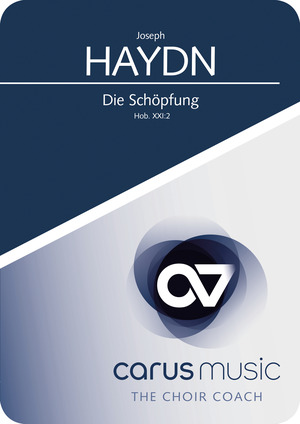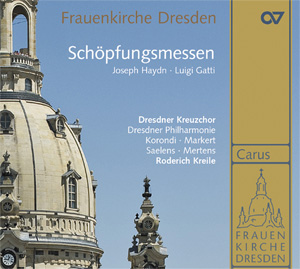La Création
Adaptation pour orchestre de chambre (arr. J. Hickman) Hob. XXI:2, 1798/2018
Grâce à cet arrangement, il est possible de donner l’œuvre avec un effectif plus restreint. La musique descriptive avec ses couleurs lumineuses est caractéristique de la partie orchestrale de Haydn. La présente adaptation s’efforce de reproduire les bonnes couleurs à la fois pour les parties mélodiques obligées et pour les passages instrumentaux colla parte. Elle s’inspire fortement du texte musical de l’édition critique Carus de la version originale de Haydn (Carus 51.990, ed. W. Gersthofer), les partitions pour chœur, réductions pour piano et parties de cordes déjà disponibles le cas échéant peuvent donc être réutilisées. Parfois, les représentations modernes de la Création ont recours à jusqu’à 50 à 60 instrumentistes. La présente édition a pour objectif de rendre cette œuvre accessible aussi aux groupes moins nombreux, aux lieux de concert plus petits et aux budgets modestes.
| Version originale | Adaptation pour orchestre de chambre |
| Soli STB, Coro SATB, 3 Fl, 2 Ob, 2 Clt, 2 Fg, Cfg, 2 Cor, 3 Trb, Timp, 2 Vl, Va, Vc, Cb, Cemb | Soli STB, Coro SATB, 2 Fl, Ob, Clt, Fg, 2 Cor, Tr, Timp, 2 Vl, Va, Vc, Cb (des cuivres chromatiques sont nécessaires) |
-
Compositeur
Joseph Haydn
| 1732-1809As Kapellmeister to Prince Esterházy, Haydn composed numerous instrumental works and various operas, as well as making important contributions to the genre of church music, including fourteen Latin masses, of which only twelve are authentic or complete; these are complemented by motets and offertories, two important Te Deum settings, two Salve Reginas, a Stabat Mater, and the different versions of the Sieben Worte des Erlösers am Kreuze. The masses were composed continually between 1749 and 1802, except for the years 1783–1795, and therefore constitute the genre with which Haydn was occupied over the longest period of time. The six (authentic or complete) masses composed before 1782 are stylistically very different, and as well as short Missae breves there are more extended masses with rich orchestral scoring; by contrast the six so-called late masses, written from 1796 onwards, form a comparatively homogeneous group of more extensive works scored for large forces. With his two great oratorios Die Schöpfung (The Creation) (1798) and Die Jahreszeiten (The Seasons) (1801) Haydn established the tradition of the German oratorio for middle-class music making. Plus d'information sur la personne
-
Parolier/Librettiste
Gottfried van Swieten
| 1733-1803
-
Arrangeur
Joe Hickman
Questions fréquentes sur l'œuvre
Puis-je aussi utiliser la réduction pour piano « normale » / 03 et la partition pour chœur / 05 de la version longue pour chanter la version présentée ?
Peut-on aussi jouer cette version avec des instruments historiques ?
Les parties de cordes de la version originale (Carus 51.990/00) peuvent-elles également être utilisées pour l'arrangement ?
 Il n'y a pas encore de questions et réponses concernant cette œuvre ou vous n'avez pas trouvé la réponse à votre question sur l'œuvre ? Cliquez ici et envoyez votre question spécifique à notre service clients.
Il n'y a pas encore de questions et réponses concernant cette œuvre ou vous n'avez pas trouvé la réponse à votre question sur l'œuvre ? Cliquez ici et envoyez votre question spécifique à notre service clients.


